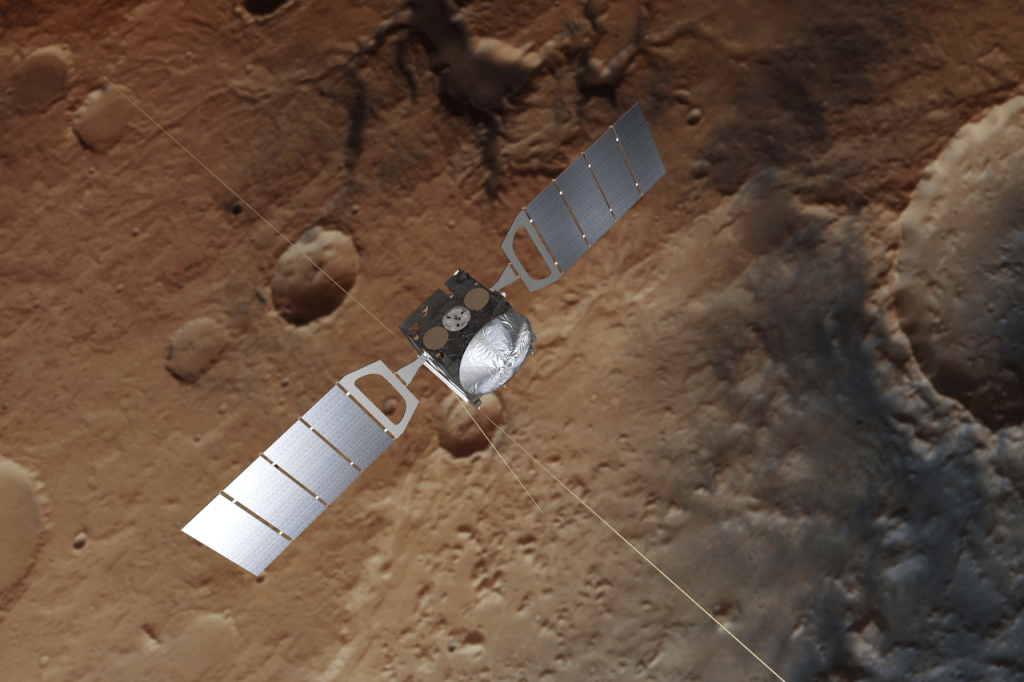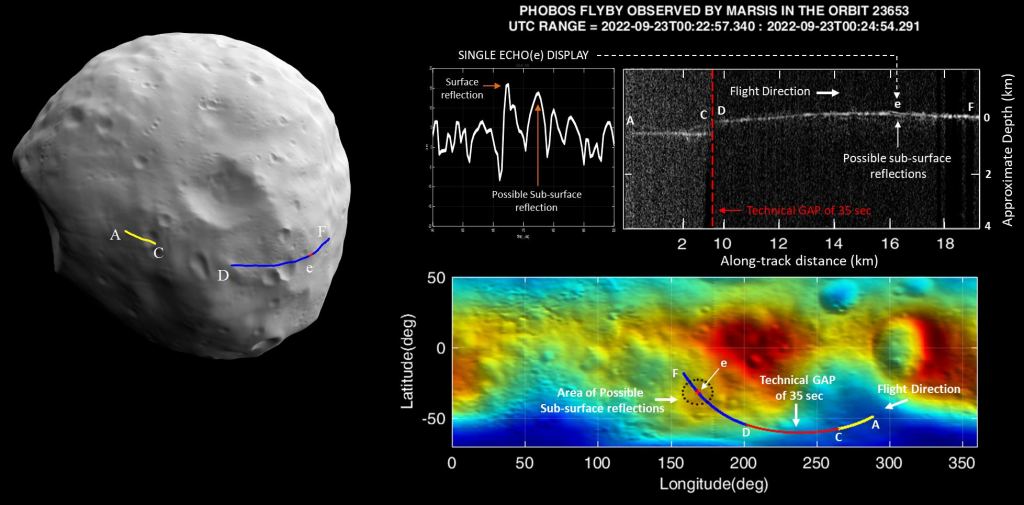Let's talk about Phobos. We know it's a moon of Mars and it orbits the planet once every 7.4 hours. It has a huge impact crater called Stickney. It measures about 9 km across. That's pretty big, considering Phobos itself is 28 km across on its longest side. But, beyond that, Phobos presents something of a mystery.
This oddly dark little world fascinates planetary scientists because of its amazingly weird cratered and striped surface. They also want to know if it's a solid body or a floating rubble pile. If so, how did it get that way? And, more importantly, they want to know how it got to be Mars's largest satellite. All these questions indicate that, for now, Phobos remains something of a mystery waiting for a solution.
Exploring Phobos Close-up
Recently, the European Space Agency's Mars Express orbiter flew past Phobos as part of its regular mission. The idea was to get "up close and personal" with this moon and bombard it with low-frequency radio waves from the onboard MARSIS instrument. There was only one hitch—a typical flyby of Phobos by the spacecraft would put it too close to get useful MARSIS data. That's because the instrument always did its best work from a distance. The original software allowed it to study the Martian surface (and beneath it) from about 250 kilometers away.
The radio waves MARSIS sends mostly reflect from the surface of an object and provide valuable information about conditions and structures there. But, some signals actually penetrate the crust and reflect back from deeper layers. The reflections helped scientists map the substructures on Mars and figure out if there are different layers of ice, rock, water, or soil. The instrument also played a role in finding signs of liquid water on the Red Planet.
So, how can MARSIS help figure out the big questions about Phobos and its origin? At the moment, scientists have two hypotheses about its past. "Whether Mars's two small moons are captured asteroids or made of material ripped from Mars during a collision is an open question, said ESA Mars Express scientist Colin Wilson. "Their appearance suggests they were asteroids, but the way they orbit Mars arguably suggests otherwise."
MARSIS Delivers an Early Look
The best way to find out its origin is to look inside Phobos. Typical optical images can only tell scientists so much. But, instruments that can probe inside Phobos can reveal a lot. That's where MARSIS comes in. Thanks to a major software upgrade, MARSIS made observations during the recent close approach. It can now "see" beneath the surface of this little moon as it flies by to look for structural clues.
"During this flyby, we used MARSIS to study Phobos from as close as 83 km," said Andrea Cicchetti from the MARSIS team at the Italian National Institute for Astrophysics. "Getting closer allows us to study its structure in more detail and identify important features we would never have been able to see from further away. In the future, we are confident we could use MARSIS from closer than 40 km. The orbit of Mars Express has been fine-tuned to get us as close to Phobos as possible during a handful of flybys between 2023 and 2025, which will give us great opportunities to try."
The Data Indicate Something Beneath the Phobos Landscape
MARSIS output a radargram based on data captured on September 23, 2022. Essentially, the radargram depicts "echoes" created when the signal from MARSIS's 40-meter-long antenna bounced back off of something beneath the surface. That could indicate a layered structure, which might indicate that Phobos is a captured asteroid. It could also mean that there's a variety of objects inside Phobos that could make it a floating rubble pile. Of course, more flybys will capture more data, which should give more details about what's lurking beneath the crust of Phobos.
The close-up studies will help scientists program the upcoming Martian Moons eXploration (MMX) mission that will land on Phobos no earlier than 2024. It will gather samples and return them to Earth in 2029. Data from those samples should help settle Phobos's origin question once and for all.
For More Information
A close encounter with a mysterious moon
Origin of Phobos and Deimos by the impact of a Vesta-to-Ceres sized body with Mars
 Universe Today
Universe Today


